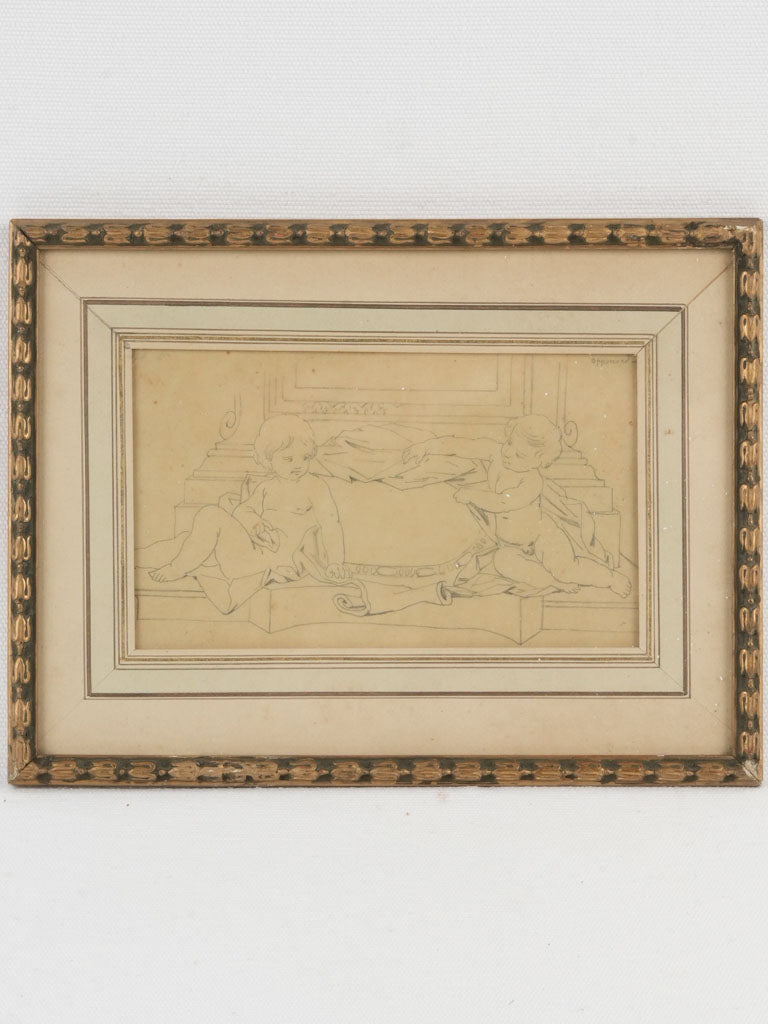
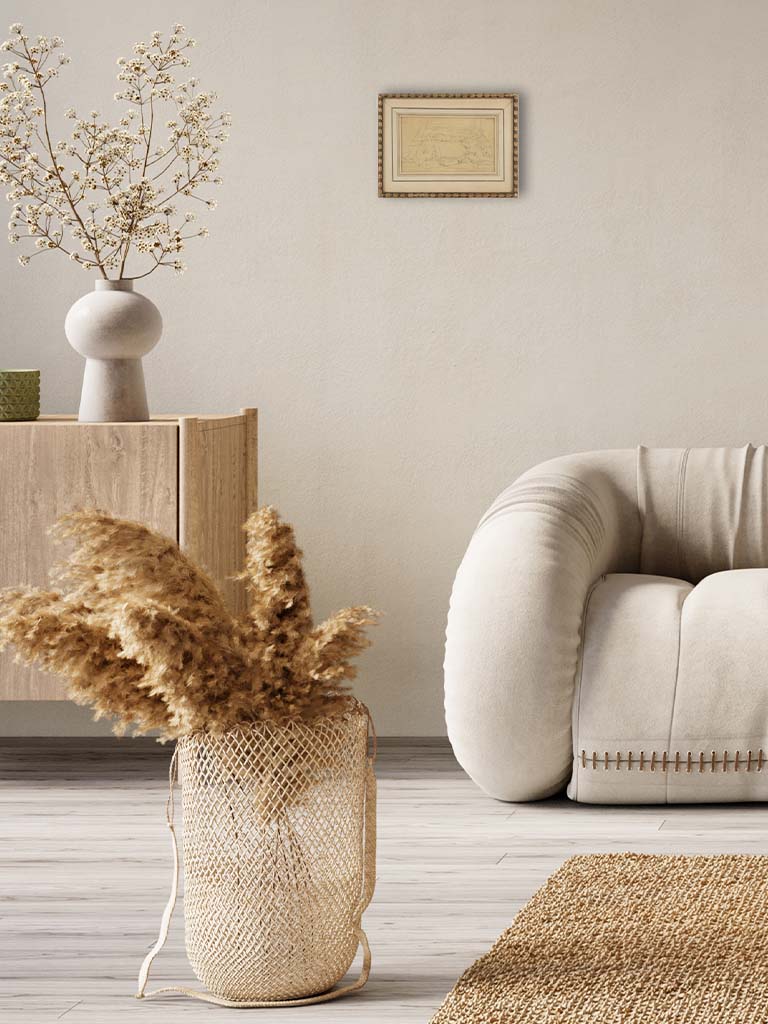
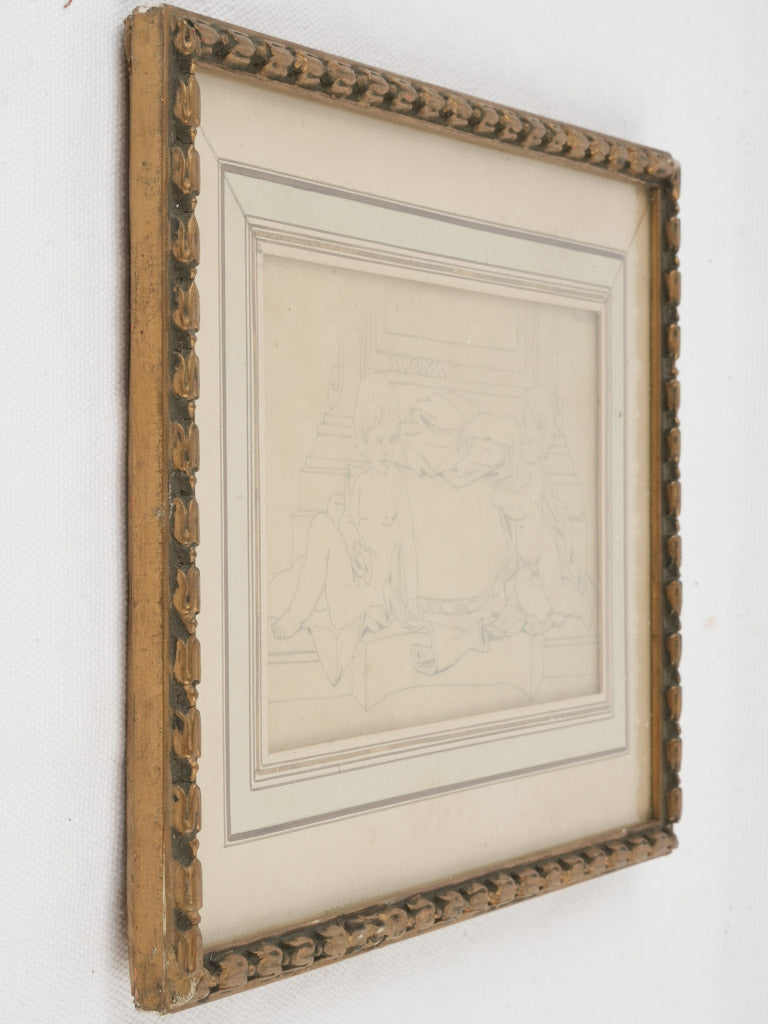
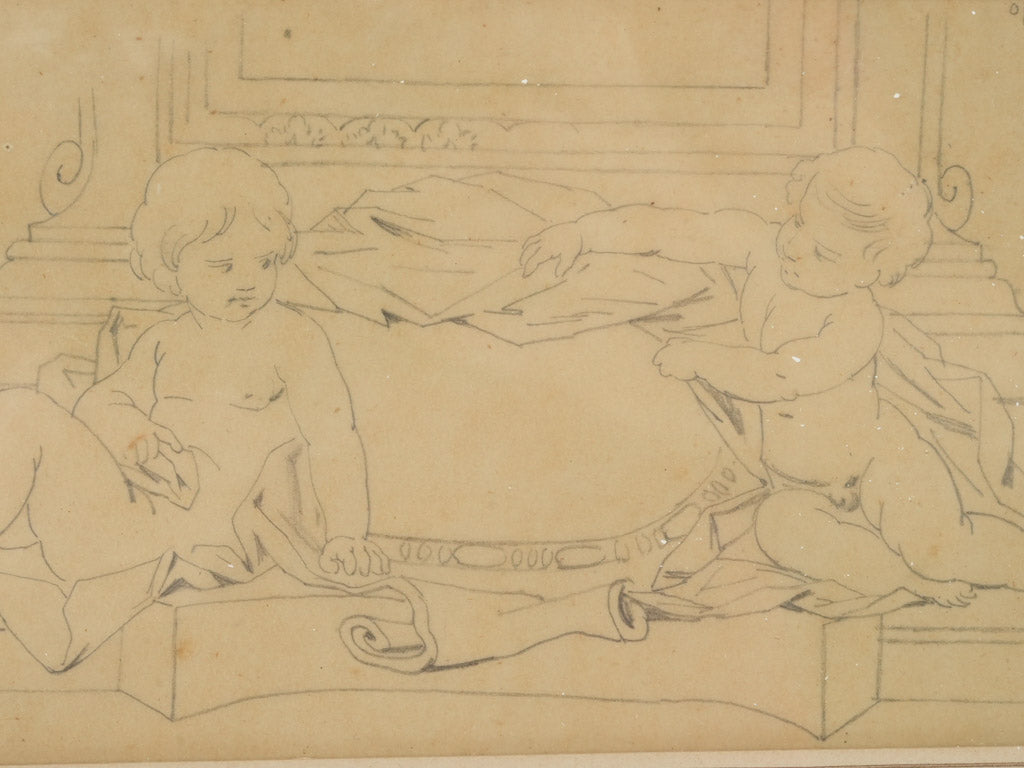
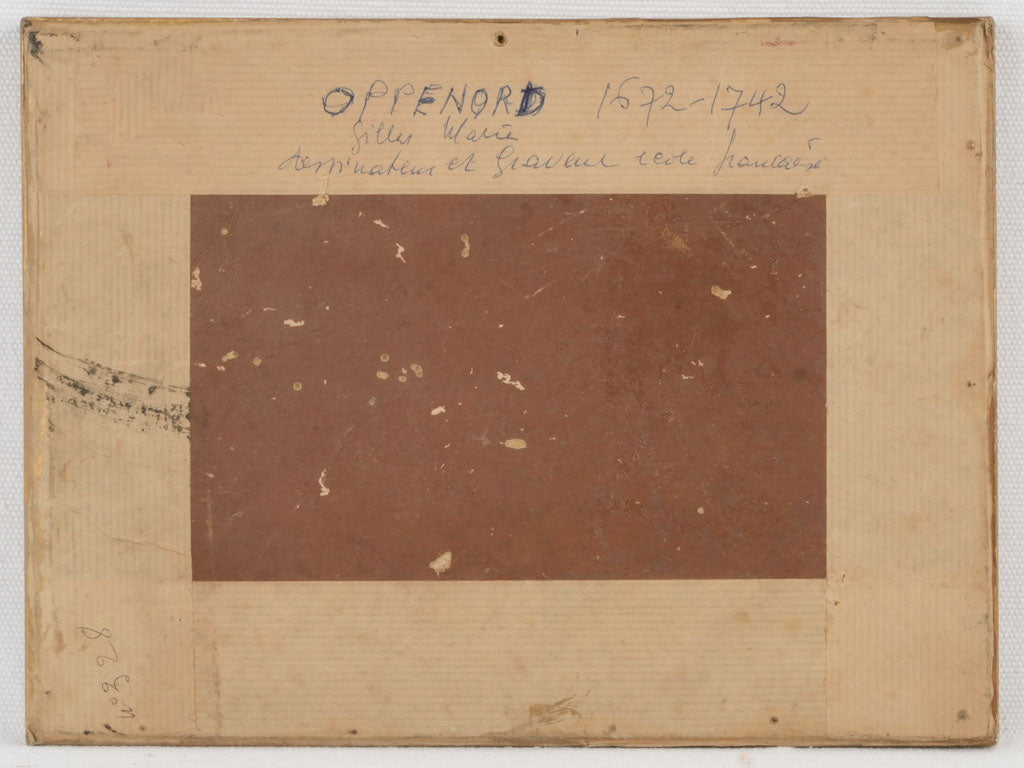
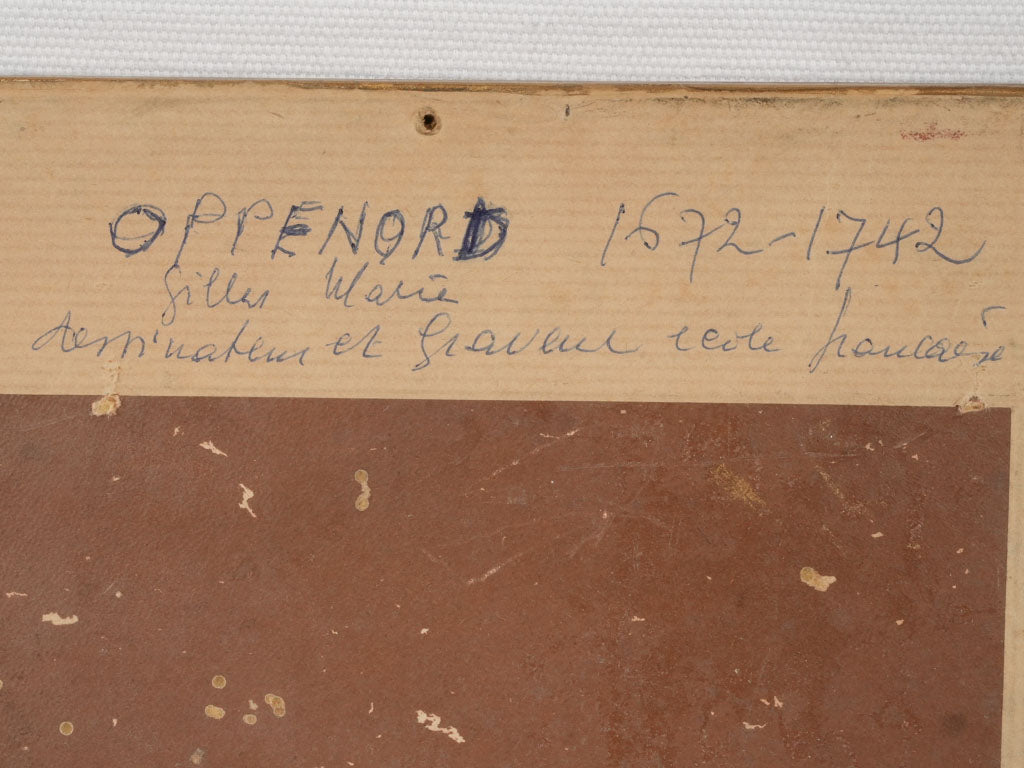
Design Sketch w/ Putti Attributed to Gilles-Marie Oppenord (1672–1742) - 8¼" x 11"
Free shipping to USA
The price is all-inclusive, no duties, taxes or shipping.
This artwork, attributed to Gilles-Marie Oppenord (1672–1742), showcases the mastery of one of France’s most renowned draftsmen and designers of the early 18th century.
The delicate sketch depicts two chubby, cherubic figures, or putti, seated at the base of an imposing stone column within a classical architectural setting. The putti are shown carefully unveiling or presenting an object, their gentle poses and expressions suggesting reverence or significance in their task. This scene brims with allegorical meaning, likely symbolizing the unveiling of truth, knowledge, or beauty, a theme deeply rooted in classical and neoclassical art traditions. The architectural elements, including the solid column and precise steps, evoke a sense of permanence and importance, framing the putti as guardians or messengers of something sacred or profound. Their unveiling action could allude to the revelation of divine wisdom, artistic inspiration, or a commemorative dedication.
Oppenord was a leading figure in the development of the Rococo style, often called the "French Michelangelo" for his extraordinary skill in architectural design and ornamental drawing. This piece exemplifies his flair for intricate detailing and classical balance, hallmarks of his contributions to decorative arts and architecture.
Born in Paris in 1672, Oppenord trained under his father, a cabinetmaker to Louis XIV, before entering the prestigious Académie Royale d’Architecture. His talent earned him a scholarship to study in Rome, where he absorbed the grandeur of Baroque architecture, especially the works of Bernini and Borromini. Upon returning to France, Oppenord brought a fresh, dynamic approach to ornamentation and interior design, blending the classical traditions of Italy with the emerging lightness and fluidity of the Rococo.
As a favored designer of Philippe II, Duke of Orléans, Oppenord oversaw the interiors of the Palais-Royal and worked on numerous prestigious commissions, including churches, palaces, and private hôtels particuliers. His drawings, admired for their precision and inventiveness, were widely circulated and influenced generations of architects and craftsmen. Beyond architecture, Oppenord's designs extended to furniture, decorative panels, and tapestries, making him a central figure in the flourishing decorative arts of the Régence period.
Oppenord passed away in 1742, leaving behind an enduring legacy as a pioneer of Rococo elegance and French decorative arts. Today, his works are highly prized for their historical significance and their beauty, embodying the transition from the grandeur of Baroque to the playful sophistication of Rococo.
This rare piece offers insight into his meticulous and imaginative approach to design, making it a valuable addition for collectors and enthusiasts of French architectural history.
Condition and wear consistent with age and use.
Approx. overall 8¼" high x 11" wide x 0¾" deep incl. frame
Approx. overall 21cm high x 28cm wide x 2cm deep incl. frame
Choose options

